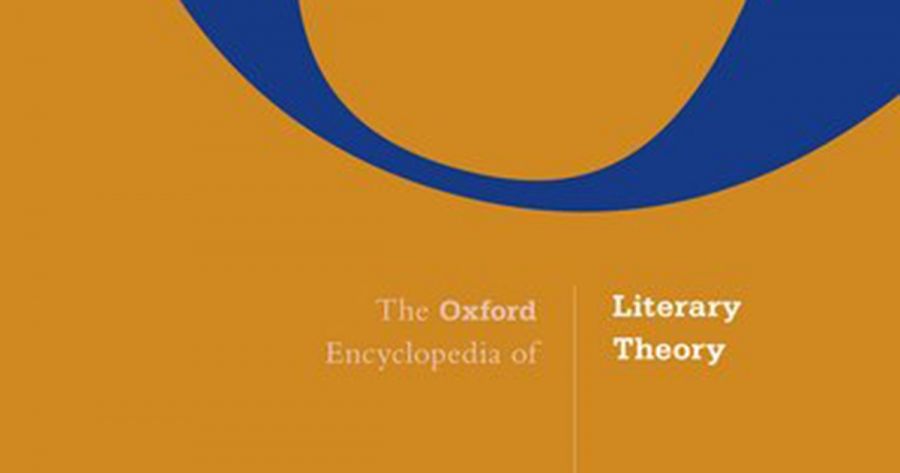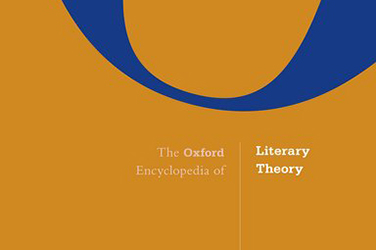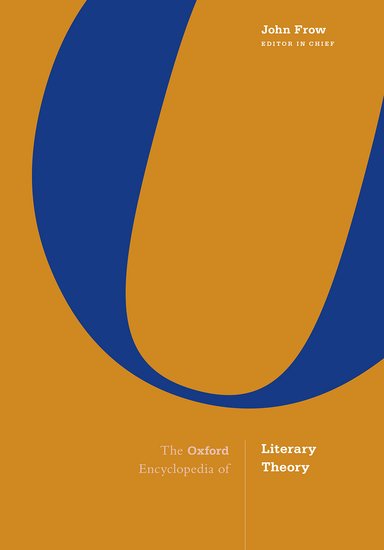
- Free Article: No
- Contents Category: Literary Studies
- Review Article: Yes
- Article Title: Conceptual applecarts
- Article Subtitle: A hefty examination of literary criticism
- Online Only: No
- Custom Highlight Text:
Coming in at 3,140 pages spread over four chunky volumes and featuring essays by 181 contributors, The Oxford Encyclopedia of Literary Theory is in every sense a weighty articulation of the state of literary criticism in the early twenty-first century. In their famous Encyclopédie (1751–66), Diderot and d’Alembert promulgated the virtues of consolidating new know-ledge in the public domain, rather than leaving the intellectuals who were responsible for the development of such expertise isolated in their academic cloisters. Looking back self-consciously to this distinguished predecessor, John Frow, in his Introduction, acknowledges a tension between the encyclopedist’s instinct to reproduce conventional categories, instead of risking the introduction of new research that might upset conceptual applecarts, and the desire of ambitious editors to frame these topics in a progressive rather than ossified manner. Hence Frow cites his instructions to contributors as inviting authors ‘to make their own arguments about the topic rather than (just) describing existing treatments of it’, adding: ‘In this way many of our articles may diverge from what readers would expect to see out of a traditional encyclopedia entry.’
- Featured Image (400px * 250px):

- Alt Tag (Featured Image): Paul Giles reviews 'The Oxford Encyclopedia of Literary Theory', edited by John Frow
- Book 1 Title: The Oxford Encyclopedia of Literary Theory
- Book 1 Biblio: Oxford University Press, £515 hb, four volumes, 3,140 pp
- Book 1 Cover Small (400 x 600):

- Book 1 Cover (800 x 1200):

One signal advantage of this Encyclopedia is to highlight the general ubiquity of literary theory as an intellectual phenomenon. In an era when the academic study of literature is frequently regarded as an antiquarian pursuit and when there has been more pedagogical emphasis on writing as a mode of personal expression, Frow stakes out a contrary position: ‘Rather than assuming that theory is something of interest only to people who work professionally with ideas, we could start with an understanding that any engagement with texts, however simple or casual, is informed by theoretical presuppositions.’ The range of material encompassed here offers ample testimony to the ways in which texts of all kinds are shaped by social and political networks as well as philosophical and psychological formations. If there is one takeaway from these four volumes, it is that literary theory reaches into every part of the known world of representation and communication, from song to laughter to pornography, each of which is granted its own entry.
It is also worth remarking on the specifically Australian contribution to this more expansive understanding of literary theory. Frow himself – an emeritus professor at the University of Sydney, who has also worked in the United States and Scotland – and two of his four associate editors (Mark Byron and Sean Pryor) are based at universities in Australia, along with twenty-four of the other contributors. As a point of comparison, this total makes for near parity with the United Kingdom, which has twenty-seven, and it suggests significant Australian involvement in this global scholarly enterprise. Historically, one of the enduring contributions of Australian academics to literary theory has been to broaden out the subject’s intellectual base, to intertwine it in creative ways with wider discursive currents such as feminism, postcolonialism, and media studies. This model of interdisciplinary hybridity goes back to epochal figures such as Germaine Greer, who studied English at the University of Melbourne in the late 1950s before undertaking a PhD on Shakespeare at Cambridge, and these volumes help to institutionalise that venerable tradition. Frow also remarks in his Introduction on how, in recent times, ‘literary studies has come to be marked by a structural reaction against the dominance of the US academy’. Though of course there are many distinguished American contributions to this work, its underlying trajectory, sitting on a border between literary and cultural studies, exemplifies this general reaction, with the principled heterogeneity being more Australian than American in its orientation.
There are, of course, various anomalies and curiosities embedded within this project, some relating to editorial choices, others to quirks in the publishing process. There is relatively little, for example, on theories of national literature and how these have been advanced by a range of distinguished critics, from Ian Watt to F.O. Matthiessen. There is, for instance, a section on ‘Indigenous Studies: Australia’, but nothing on Australian Literature as a contested theoretical construction in itself. Nor is there much on historicism in any of its guises: the third section, on Methodologies, contains an essays on ‘Historical Poetics’ and another on ‘Historicities’, but there is little engagement with New Historicism, which under the influence of Stephen Greenblatt and others has become one of the most influential critical methods over the past forty years. The whole question of literary periods and periodisation, which has also received much critical attention in recent times, is also relatively neglected, implying the preferred editorial distance from historicisation per se.
It also seems an odd choice on OUP’s part not to divide these four volumes by the Encyclopedia’s four central thematic sections: Formal Concepts, Identities, Methodologies, and Institutions. This does allow for a uniform set of (rather dull) covers and physical objects of approximately equal heft (around 800 pages each); but it also makes individual articles more difficult to track down, since each volume looks physically the same and bears no relation to any individual subject. For example, the fourth section, ‘Institutions’, begins a third of the way through the fourth and final volume. Perhaps this is indicative of an assumption on the publisher’s part that the digital rather than physical version of this project would be more likely to find its way into libraries, and thus it was not worth paying too much attention to the hardback version. However, a more attractive option might have been to give this fourth volume the subtitle ‘Institutions’ and to have reorganised the others accordingly.
There may, however, also have been commercial considerations involved here. OUP may have feared that dividing the project in this way would have been detrimental to sales, since libraries could then have been selective in deciding which particular volumes they wished to purchase, whereas under this arrangement they have no option but to acquire the whole series. The ‘Institutions’ section has a useful essay by Evan Brier on ‘The Literary Marketplace’ that covers the history of the book as well as the apparatus of contemporary publishing, but it includes little on how scholarly institutions such as universities, monasteries, and (in Australia) mechanics’ institutes have long been instrumental in the dissemination of learning. The relationship between this particular scholarly output and its institutional framework would certainly be worth further consideration, while the first and largest section on ‘Formal Concepts’, which covers both traditional formats of production (‘Tragedy’, ‘Literary Translation’) and more recent forms of reception (‘Poetic Cognition’, ‘Sympathy and Empathy’), could perhaps usefully have been broken down into more discrete units.
Overall, however, this Encyclopedia should be considered a monumental achievement, one that will surely be an essential resource in all university research libraries the world over, comprising a key point of reference for many years to come. I only came across one typo in the whole four volumes, in the piece on ‘Canon and Classic’ on page 2,586, which describes ‘canon-making’ as ‘a form of gatkeeping’.
OUP of course relies on its established academic reputation to sell books of this kind to university libraries, and indeed their dictionaries and other reference material cross-subsidise their original academic monographs, which are a good deal less profitable. Nevertheless, the compelling achievement of this Encyclopedia of Literary Theory is that it does not rely on any official imprimatur for its worth, and all of its 181 essays contribute significantly towards building up a complex picture of the continuing valence of this multidimensional field in the contemporary world.


Comments powered by CComment